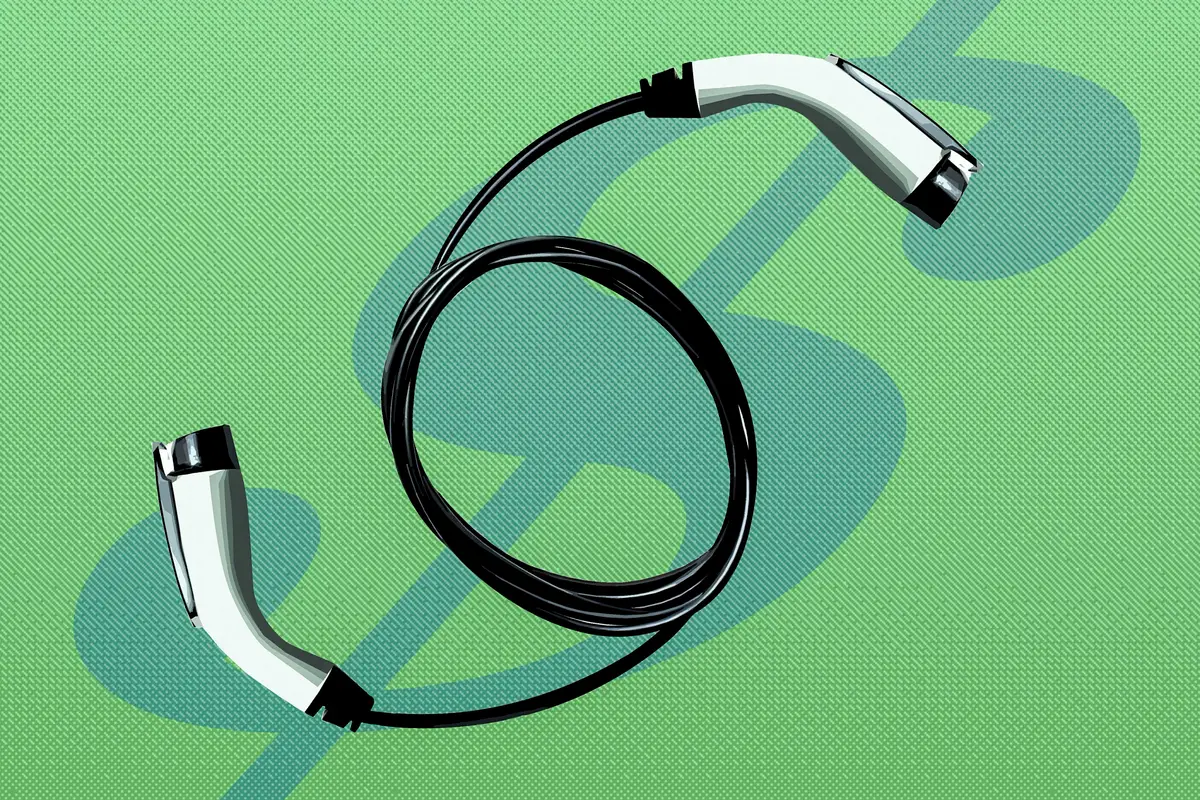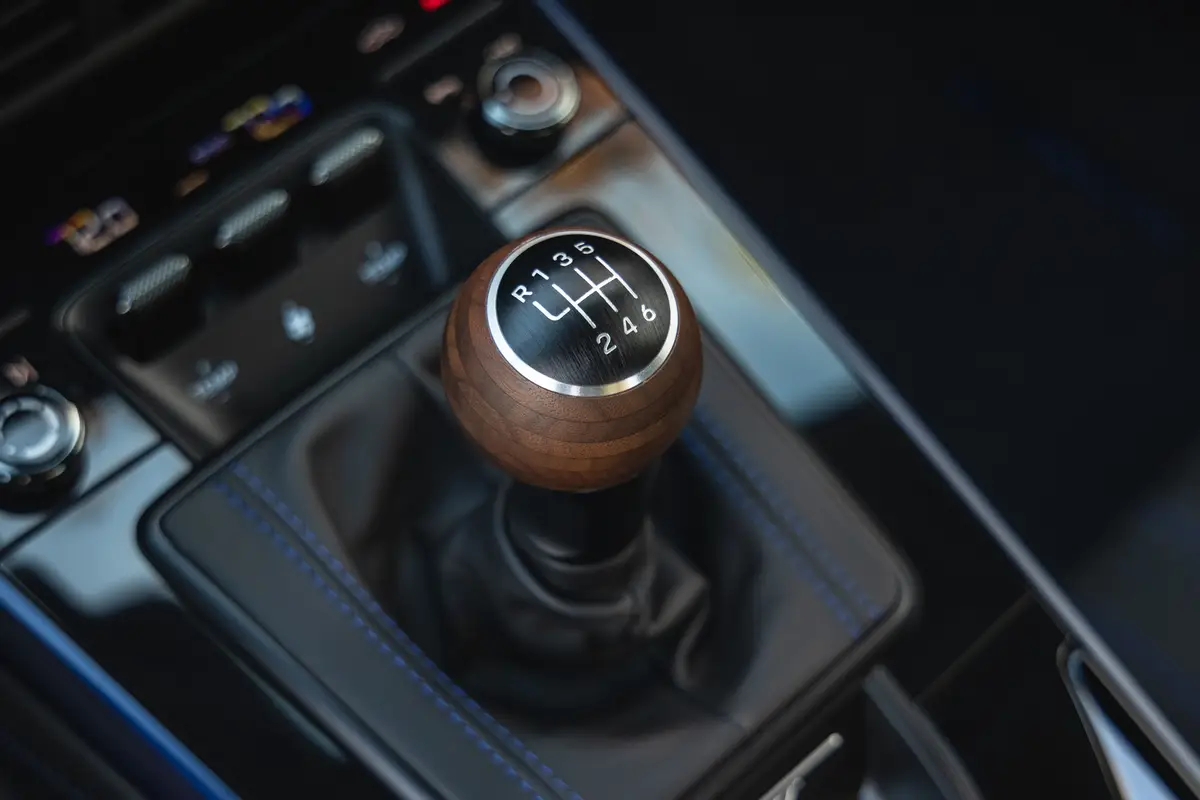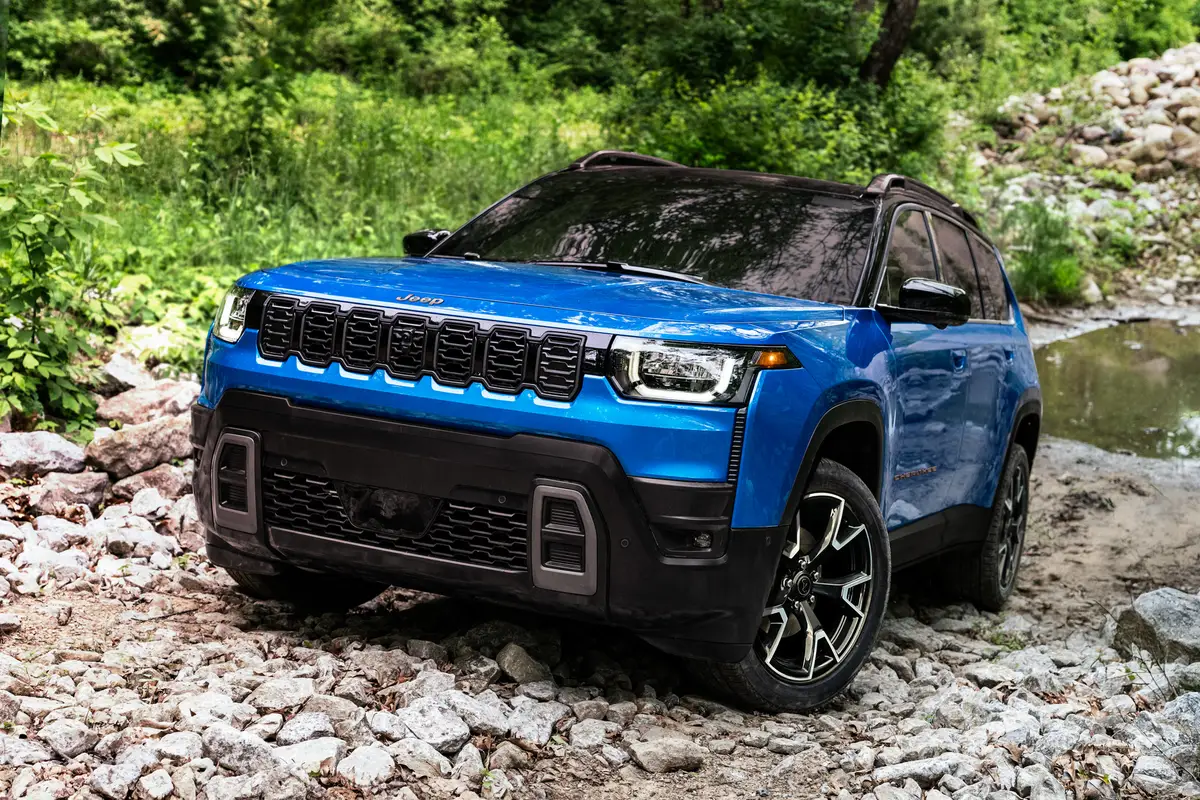Video: 2019 Jeep Cherokee: Review
By Cars.com Editors
September 12, 2018
Share
About the video
For 2019, Jeep has updated the Cherokee SUV significantly. It's not just aesthetics, though; see more of how it's different here.
Transcript
For 2019, Jeep has updated the Cherokee SUV significantly for the first time since it returned to the market in 2014. Some of the changes are pretty obvious, some less so.
I'll give you the highlights of what is overall a very strong model but with a shortcoming that might be a deal breaker depending on what you can tolerate and how much you're willing to spend. The most noticeable change is the front end redesign. Among other things, the cascading, the waterfall grill originally the hood was more sharply creased and the grill would start on the horizontal and kind of flow over like water, now it's contained down low, more like other Jeeps. But the biggest change is that the daytime running lights and headlights are now reoriented. When it came out in 2014, the Cherokee was and remained the only Jeep that has separated the daytime running light up here and the headlight down about there behind a frosted lens. So during the daytime, you might not even know that was a headlight. This was a polarizing design. And I don't mean polarizing like automakers called her ugly stuff polarizing. Some people really did like it, thus the polls. I liked it the way it was, I thought it made it unique. That was good but Jeep decided to go a little bit more like all the other Jeeps in the lineup and to bring the headlight up to meet the daytime running light for a more conventional look. I'm not sure it was a great move, not just cause I liked it the way it was but because it almost seems like they fixed it. I see a kind of a big slab of bumper here that looks like something else used to be there and then they changed it maybe it's just me. Interesting that Hyundai seems to have taken this design that they've abandoned and applied it to the Kona and the redesigned Santa Fe where they have high daytime running lights and low headlights though maybe not even as well executed as the Cherokee was originally. There aren't too many changes in the interior, there's this nice piano black finish on the center controls. There's a little pocket in the front that's a little bit bigger than it used to be and you can get this nice two pane moon roof now. But by and large, the interior was never a problem with the earlier model years of this vehicle and not just in the high trim levels like this Overland, it had a nice interior, even in the lower trim levels. The vehicle rides nicely, it's relatively quiet. Some tire noise comes in especially with more aggressive tires in the trail hawk and even this Overland. But overall it's comfortable and one of the things I liked the most is there's nothing stupid in here. I mean, look at the layout. The buttons make sense. It's a simple touch screen. The shifter is a normal P-R-N-D shifter, none of this electronics which nonsense. So all of this stuff was positive. Oh, and I should mention, this is now the fourth generation of the Uconnect touchscreen system which supports Apple CarPlay and Android Auto which are good though I will say in this early vehicle we have, there were some glitches including a frozen screen for some time but that's the kind of thing that can really depend on the phone you're attaching it to as much as to the vehicle itself. So that's the kind of thing that will probably be ironed out over time. How accommodating the Cherokee is, really depends on what you compare it against. For what it's worth, even though the price starts along the line of other compact SUV's on the market. Technically, Jeeps compact is the compass. The Cherokee is a little bit bigger but not quite as big as midsize vehicles. So if you're comparing versus compact, you might find this reasonably roomy especially in the back seat. But you will see a bit of a downside in the cargo area. Jeep is proud to have added more than three inches of width to the cargo area but overall by the numbers, it's added just over one cubic foot of cargo volume. And by the numbers, the space back here isn't that competitive especially versus mid-size SUV, it's among the smaller ones. But credit for having the sliding back seat that allows you to have the comfort when you need it and can give yourself more room as on the side when it's needed in the cargo area. You also might notice that the load floor is pretty high and that's partly because there's a few inches of extra space underneath this floor and then below that there is even a full spare. So good use of space there. But also this reflects Jeep's desire to make all of its vehicles off-road capable. And when it comes to off-road capability, it's pretty hard to beat the Cherokee especially in the Trailhawk Edition. There are three different types of four wheel drive available with the Cherokee and two of them have a low range for crawling over obstacles. And there's also a select terrain system that lets you choose a mode based on what you see outside, sand, snow, rocks, stuff like that, there's an optional rear locking differential. I try it out all of these features in an off-road trail and found the thing to beat practically unflappable. Definitely among other compact SUV's it has really no peers. And even in the Jeep family, if you compare it with the Wrangler, it can do many of the things the Wrangler can do. The big difference though is this has independent front and rear suspension where as the Wrangler has solid axles that allow the axle to pivot on the differentials and get more wheel articulation. So there's definitely more capability ultimately in a Wrangler but if you're looking for something smaller, that's more of a traditional crossover style SUV that can go off road, it's hard to beat the Cherokee. So you may thinking all of that sounds pretty good and it is pretty good. In fact, we owned a Cherokee in 2014 that we tested for a year and we all liked it a lot except for one thing and that is the nine speed automatic transmission. Over the course of that year, we had it re flashed at the dealership a few different times, trying to get it to shift more smoothly, to up shift more smoothly and to respond more quickly to not hunt for gears and introduce lag and delay. And it didn't work. We actually ended up replacing the engine too but oddly enough, that's not what sticks in the mind, partly because problems with this nine-speed transmission with lesser powered engines has remained a problem in essentially any vehicle that has it in my opinion, including some from brands other than Jeep and Chrysler. So what's happened this year that could change things is the introduction of a new optional engine, a two-liter turbocharged four cylinder which gets to 170 horsepower and 295 pounds feet of torque as opposed to the previous option which was a 3.2 liter V6, still available that's 271 horsepower but less torque at a higher RPM. So it's less powerful engines that tend to make automatic transmissions look worse and behave worse. The car we owned was the 2.4 liter non turbo-charged, four-cylinder which is still the base engine. Now, what I found so far is that there's no question having more torque, which is what gets you off the line, definitely improves the experience even with this nine speed transmission from a German supplier ZF or is zF if you must. But it still isn't perfect. So we set up the car with some extra cameras trying to illustrate it for you. So you can decide whether you think it's reasonable or not for you. So we are in an Overland with the four wheel drive and the two liter turbocharged, four cylinder that is new for the 2019 model year. We're gonna do a few different starts and passing maneuvers and you can see how it performs, how it responds. I can be really dramatic and obvious with stepping on the pedal, are you ready? Here we go. Now what we had there was what I think most people would consider an acceptable amount of delay before the vehicle took off. Just a little bit of wind up, you can expect that from a turbo-charged small engine. It is not out of the ordinary especially nowadays and the transmission handled it pretty well. So now I'm going in about a 15 mile an hour rolling start. Okay, just rolling along. Watch my leg one, 1000, two, close to a two count before it even reacted, that's too long in my book. We'll try it again with a slightly different speed, going about 45 now, we're gonna do it again. Here we go, ready? One, 1000, that was a little bit better, maybe a one and a half count before it took off. Now this is a typical highway passing maneuver I'm gonna illustrate for you. I'm going 55, watch the leg one, 1,000, two, 1,000, almost three count before the engine did anything and when it did, it didn't really seem to have that much oomph, which is weird because this is a pretty powerful engine. It's the most powerful one you can get. This is more reflective of the kind of things we've been experiencing with this transmission. I'm doing it the most obvious way where I'm stamping on it. So you can hear and see my leg. But if there are cases where you apply a little bit of accelerator and then maybe a little bit more, it seems like it can get confused and you get more of those two to three second delays that are really hard for us to reconcile. It's unfortunate that this is kind of become more common among transmissions with high gear counts 'cause I don't think it's necessary just because a transmission has more gears and has to use more gears to kind of justify its existence and its efficiency, it doesn't mean it has to get confused and delay picking one. It's a computer computers can think faster than we can. I still don't get it. And I have to say the nine-speed in this vehicle went in with a lesser engine is one of the worst offenders on the market. Now bear in mind, there is a sport mode available for this transmission as many modern transmissions have and that does improve things, why? Well, it tends to keep the transmission in lower gears to begin with so there's less chance that it's going to have to jump to another one and induce that unnecessary delay that is helpful but at the same time, it shouldn't be necessary for you to drive around in a mode that is going to get you lower gas mileage all the time just on the off chance that you want to pass. And if you're gonna go change into sport mode just to pass then I mean that's a delay in and of itself probably doesn't help you much. You could just stand on the pedal and wait for something to happen. What I recommend if you're considering the Cherokee is that you get whatever engine you want to buy and put it through similar paces and see how it performs for you. This should be the best case scenario because it is the engine with the most torque. Jeep claims to have continued to refine the nine-speed transmission since our 2014 certainly, but we have driven others including relatively recently at 2018 that's still had some of this hesitation. And while we don't really think twice about this transmission, in our Chrysler Pacifica with a 3.6 liter V6, we definitely notice some of the same pitfalls with the 3.2 liter V6 in the Cherokee and definitely with the 2.4 liter four cylinder. Bear in mind that if you do go for the two liter turbo, the new engine, it's going to cost you more and it's going to continue to cost you more because though it runs on regular fuel, it can run on regular gasoline, it prefers for maximum output 91 octane premium. It would be much better if somehow they got to the bottom of the problems with the nine speed and made it better for all the engines but at least now for 2019, you've got something that's closer to acceptable depending on what you're willing to tolerate.
Featured stories

By Cars.com Editors
June 6, 2025

By Cars.com Editors
June 3, 2025

By Jared Gall
May 29, 2025
